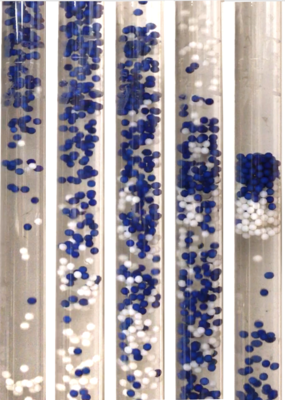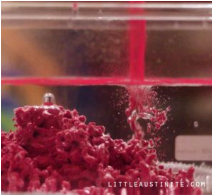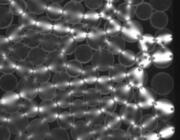Research
Soft condensed matter and complex systems
My research interests are in the fields of soft condensed matter, nonlinear dynamics, and complex systems. In these systems, the interaction of a large number of relatively simple building blocks leads to complex, emergent behavior. These systems typically exhibit nonlinear dynamics that elude simple analytical solution.
Much of the work involves constructing and running table-top experiments and using image processing routines to extract quantitative measures. Students interested in teaching may also complete projects related to Physics Education Research.
Granular Materials
 Granular materials are ubiquitous, from the mixing of pharmaceutical powders and processing of industrial materials to natural examples including avalanches and erosion. In fact, their abundance and commercial applications are part of the reason that they are estimated to account for around a trillion dollar economy.
Granular materials are ubiquitous, from the mixing of pharmaceutical powders and processing of industrial materials to natural examples including avalanches and erosion. In fact, their abundance and commercial applications are part of the reason that they are estimated to account for around a trillion dollar economy.
Despite this, they are still surprisingly mysterious. The fact that something as simple as sand can both flow through an hourglass and support our weight in the beach (and even act as a gas in vibrated systems) alludes to the fact that granular systems do not strictly act as a traditional state of matter. There are still deep physical questions to be answered. Some of these are related to the anisotropic stress network in which fluctuations are as large as the mean, the strong history dependence and energy dissipation, and the connection to a broader class of “jammed” systems. We still don’t have the basic equations of flow like the ideal gas law or the Navier-Stokes law for fluids.
The ultimate goal of this research is to formulate a general theory of granular flow. Recent experiments in the lab focus on:
• Effects of external vibration on dense granular shear and the jamming transition
• Avalanching statistics in laboratory-scale rotating drum experiments
• Rheology of dense granular systems.
Some of our experiments involve 2D photoelastic systems in which we can do particle tracking and image the complex internal force network (above) to develop an understanding of how the grain-scale behavior of our “fluid” determines the macroscopic flow properties.
Movies:
Planar shear experiment of pentagonal grains.
Photoelastic imaging of planar shear to visualize force chains.
Multiphase Flow


When an interstitial fluid is present, granular-fluid systems become even more complicated. Additional cohesion at low fluid concentration (e.g. sand castles) and fluidization at high concentrations (e.g. quick sand) affect rheology significantly. We study statistics of the clogging transition (above left), similar to the jamming transition. In addition, surface chemistry effects can also be important. If you’ve ever played with “magic sand” (above, right), sand with a hydrophobic coating to prevent wetting, you have experienced the strange behaviour of these hydrophobic surfaces, which are relevant to industrial processing and soil science.
Current experiments in the lab focus on:
• Rheology of dense, granular flow with quenched disorder
• Clogging of bidirectional suspension flow
Movies:
Clogging in bidirectional flow.
Bidirectional flow without clogging (same setup as above).
Physics Education Research
There is much that has been learned about how we learn and how we teach and learn physics specifically. Students interested in physics pedagogy are welcome to discuss research projects in physics education research.

